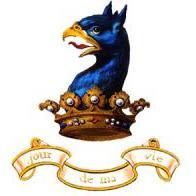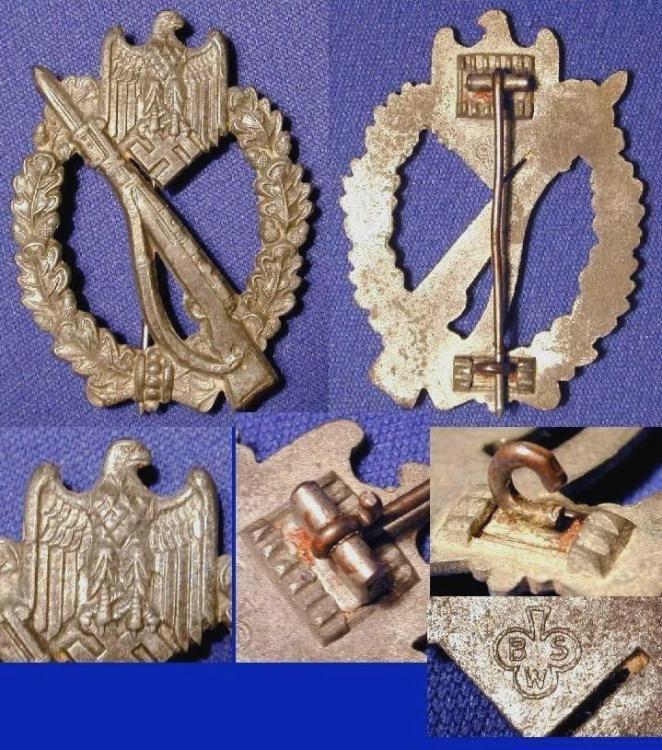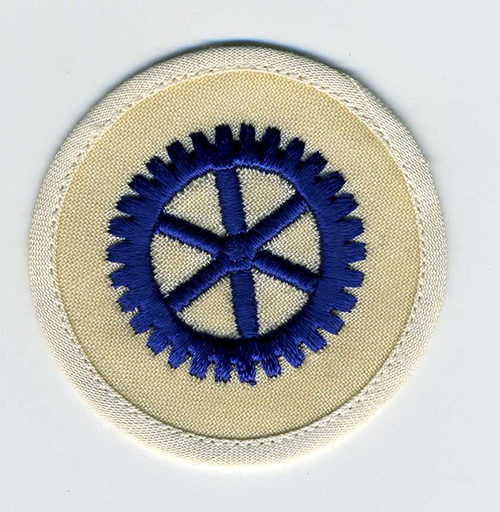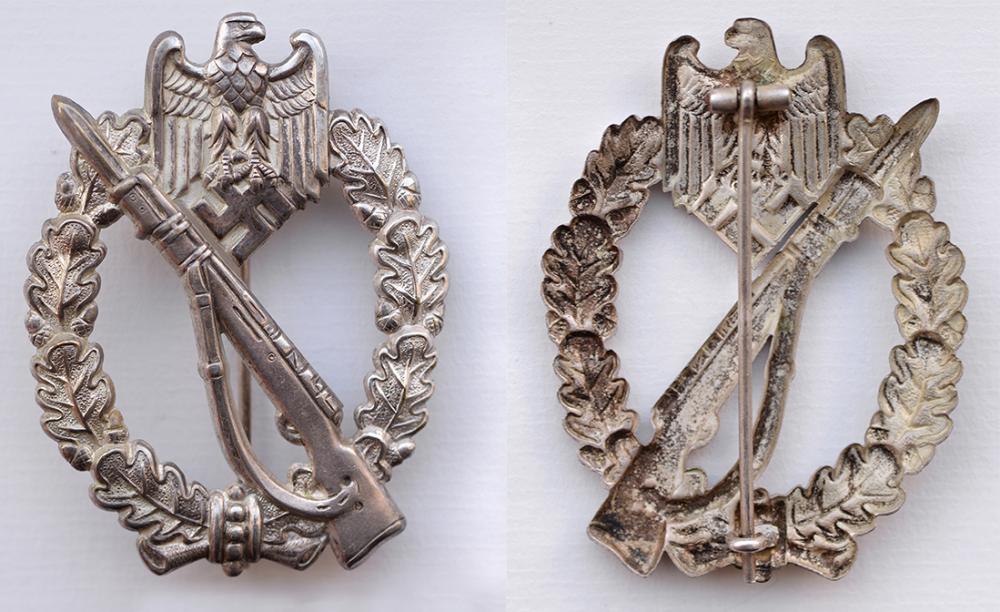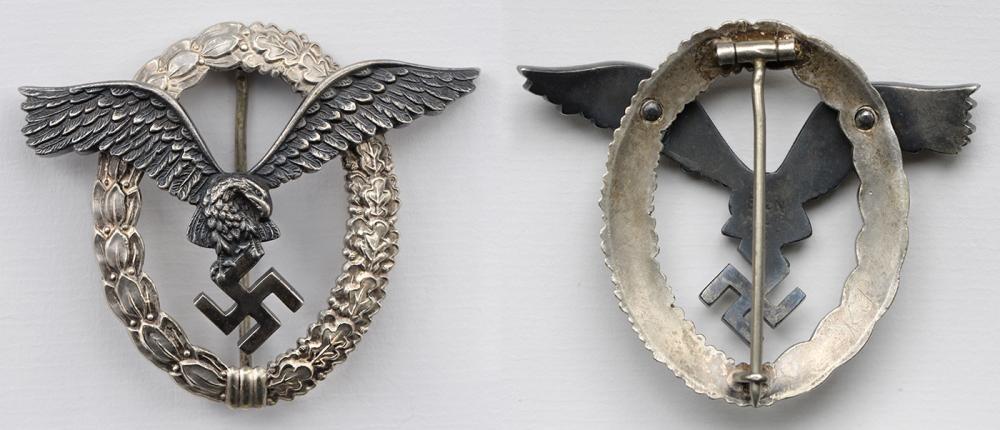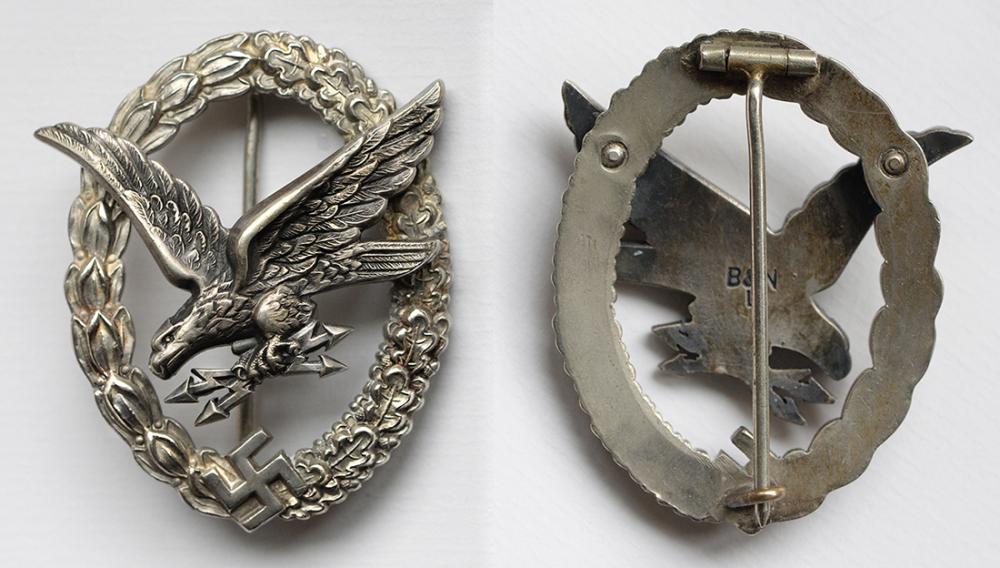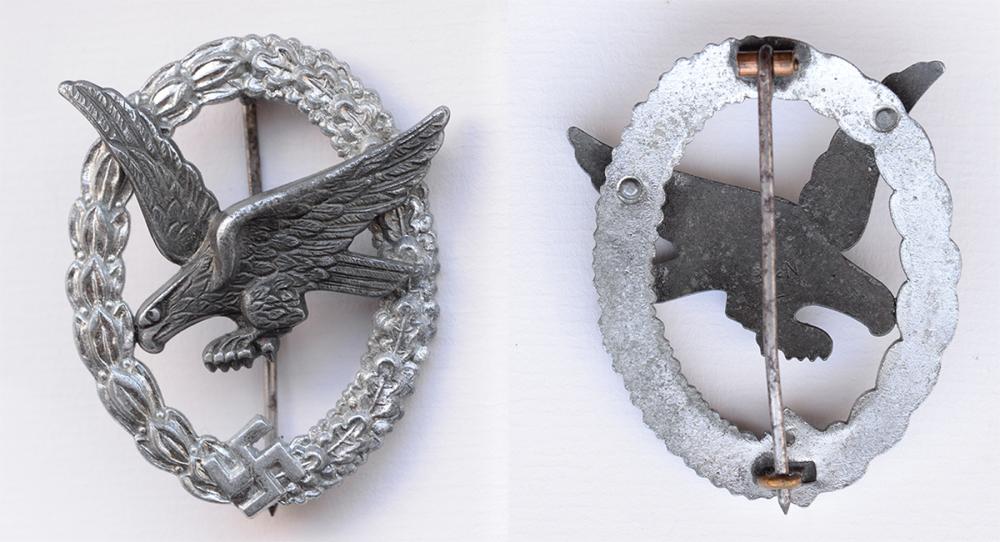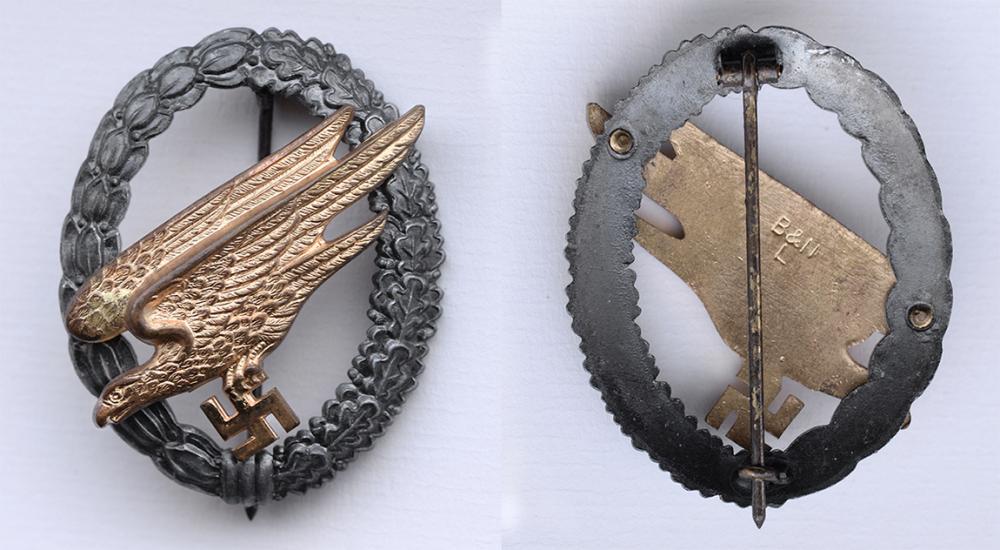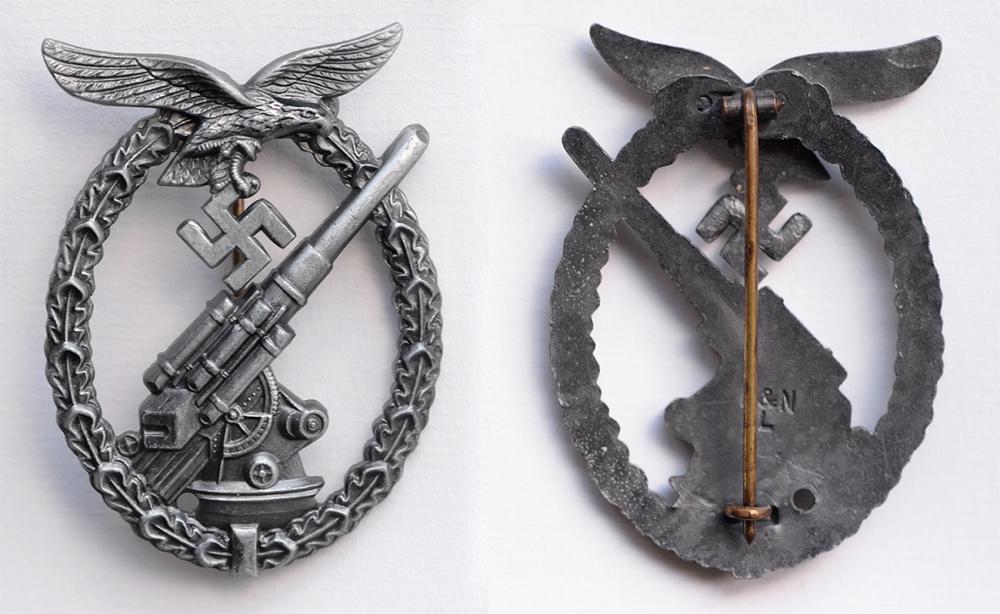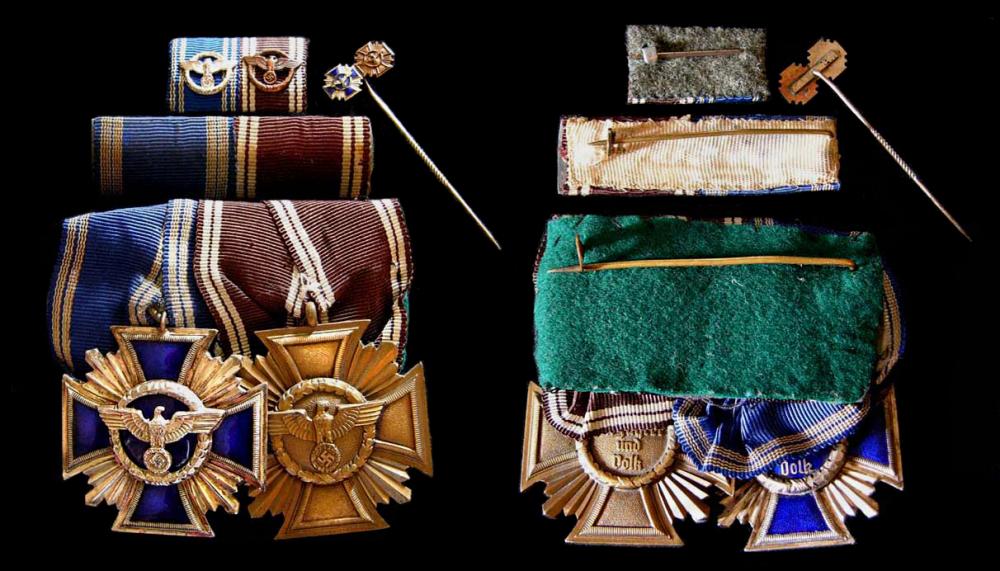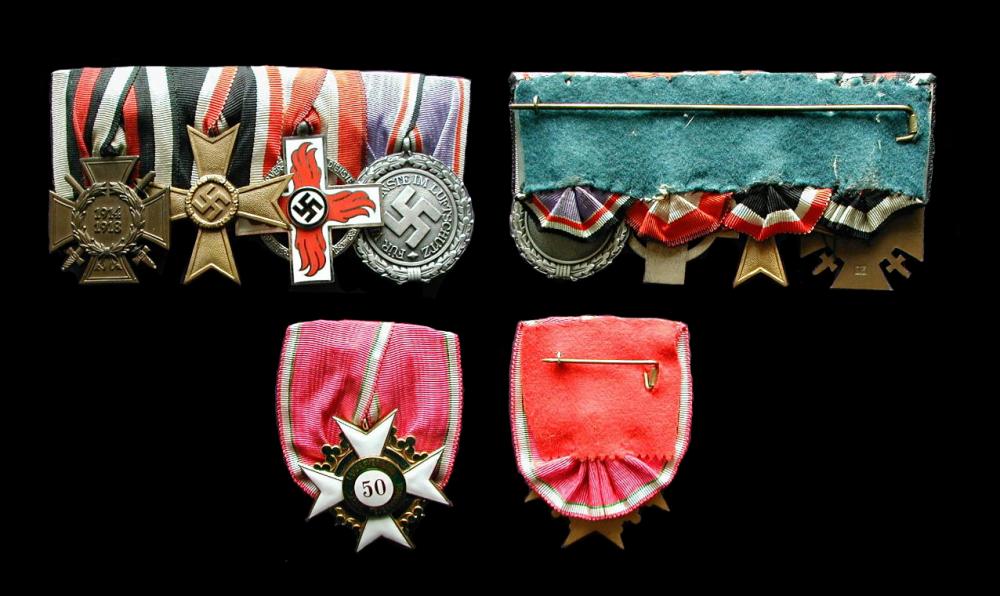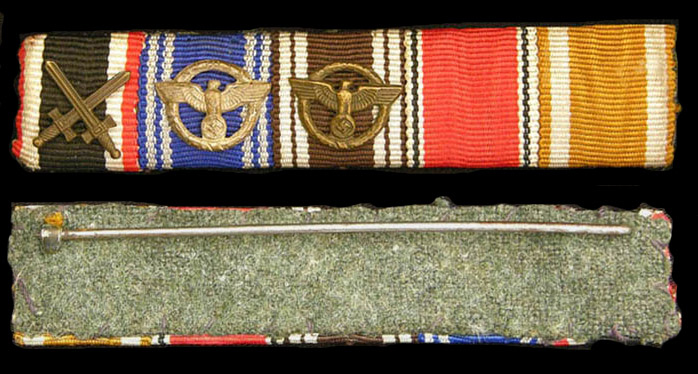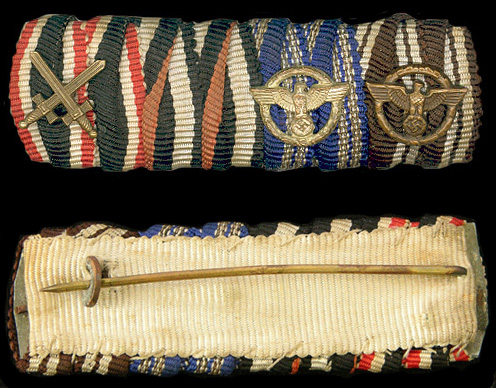-
Posts
3,397 -
Joined
-
Last visited
-
Days Won
3
Content Type
Profiles
Forums
Blogs
Gallery
Events
Store
Everything posted by J Temple-West
-
Any chance of clear closeups of the hinge and catch? BSW did produce an !AB with this type of reverse setup, but with the pictures supplied it's hard to give an opinion. I have an example of this type in my reference file...hopefully a comparison with the one you have will make things a little clearer.
-
War Merit, EKII & Wound badge look to be original... the Ostfront raises a red flag due to the excessive wear....this could be due to it being either being a copy or a bad strike in the manufacturing process. If you are considering buying the Ostfront medal, there are better examples out there at very reasonable prices.
-
I have just managed to pick up another early die stamped, nickel sliver plated tombak, Infantry Assault Badge by Otto Schickle. This one has the sheet metal catch and, as can be seen, has the most wonderful toning/patina. These badges come with two different types of catch...Sheet metal and round wire. Generally called 'Schickle/Mayer' badges due to the head of the Präsidialkanzlei, Dr. Otto Meissner, signing a decree, in June 1941, stating that the firm of Otto Schickle was prohibited from the manufacture and trade of orders and medals founded after January 1933....the reasons remain unclear. Schickle, however, were allowed to sell off certain parts of their leftover stock and the firm of B.H Mayer was one of the purchasers at a later LDO supervised sale. The one just in.... sheet metal catch. Round wire catch.
-
Hi, Nack A common fake, I'm afraid. just looking at the front of the badge is enough...these fakers produced these badges from parts cast from various makers, stamped different maker marks on them and put them on the market as originals. This one of yours has an Assmann eagle when it should have all the parts produced by Juncker and marked IMME. Looking at a comparison of your badge and the eagle on an original Assmann Observer badge shows the total lack of detail of a cast copy of an original.
-
Thank you for the reverse, and closeup, shots… So, the backing plate is certainly an early original and if it wasn’t for the suspect 10 year device I wouldn’t be too worried about a normal political bar being bad, as there are a lot of made up bars out there and it wouldn’t be a great loss if this one turned out to be one. The important point about this bar is the Danzig Cross ribbon. Having been awarded in very low numbers, anything to do with the award is rare and a very important part of the history of the time… also a piece that would command a high price in the market place. A little background about the award: Designed by Benno von Arent and instituted on the 31st August 1939 by Gauleiter Albert Forster as a decoration to be awarded to those who contributed to building up the NSDAP in the free city of Danzig. Numbers awarded: 1st class – 88 2nd class – 253 Most of these awards were issued, with great pomp, at a ceremony on the 24th October 1939, the rest by the 11th December 1939 being the last day of the award period. There is speculation that more awards were made after the 11th December 1939, but to date no evidence of this has come to light. 1st class decorations were made to members of the upper echelon of the NSDAP such as; Hermann Göring, Joseph Goebbels, Reinhard Heydrich, Fritz Todt, Joachim von Ribbentrop, Ludolf-Hermann von Alvensleben, etc 2nd class to those such as; Arthur Seyss-Inquart, Hans Baur (Hitler’s pilot), Kurt Daluege, Commanders of the SS Heimwehr Danzig etc. So, all In all, an important award, issued in very low numbers and much sort after by collectors today, and this is why, since war’s end, fakers have not only mass produced every conceivable piece of militaria but have, when it comes to ribbon bars, produced bars that have high end awards on them to increase desirability, and price. All this, having been said….the bar in question has an early backing plate, combatant ribbons, a political ribbon and the, all important, early Danzig Cross ribbon. Then why does it not have the typical bronze 10 year NSDAP ribbon device? As much as I would like this potentially important ribbon bar to be of wartime production, the fact that there is this question mark regarding the 10 year device puts the originality of the entire bar in doubt. I’ll leave this with a quote from the late, great, Richard Lundström “no original device was ever painted”.
-
I have a bad feeling about this bar... All ribbon bar attachments for the 10 year NSDAP long service award, that I've come across, have been made from bronze and this means that there was no need to add any kind of coating. The attachment on this bar looks to be of a base metal which has been painted, something that raises a 'red flag' for me. Could we see a shot of the back of the bar? In the meantime, here are a couple of NSDAP bars to have a look at....both having bronze attachments for the 10 year service award.
-
BITS AND PIECES!!!! OMG!! Is this all to one pilot or singular items in the collection? That 'Erel is top draw, and what looks to be a very nice cased 2nd pattern Assmann PB. As to the Ehrenpokal...out with the camera please....who was the recipient? "bits and pieces", indeed...you can't get away with that.
-
Good morning, Uwe As the badge in question is of the 1957 design, it would have to have been produced after 1957....when is any body's guess. these 1957 type badges are still produced today and can be found for as little as £/E/$ 35.00 on auction sites. Again, as a point of interest... the picture shown below is the only known original example of a Small Battle Units War Badge that came from the estate of Ottfried Neubecker, the designer of the award. As can be seen, the fins of the sawfish are smooth. compared to an example of a typical 1957 series piece.. As can be seen, the fins are ribbed. (photo from an article by Gordon Williamson)
-
Hi, Stojan The difference between wartime pieces and those produced in 1957 is that the fins are not ribbed on those of the 1944 design. The 1957 design, having ribbing on the fins, shows that the badge that you've posted is based on the 1957 design but has a maker mark for C.E Juncker. The Juncker factory was destroyed in late 1944 which means that either this is a one-off piece produced in 1957 with a totally different reverse set-up to the those found on most 1957 badges and with a fake post-war maker mark for Juncker. With all these red flags, I would have to give an opinion that this badge was produced to deceive. As a point of interest, there has only been one documented original 1944 'Small Battle Units War Badges badge' sold on the open market and that was in 1998 by a dealer in Germany....this shows how rare they are.



